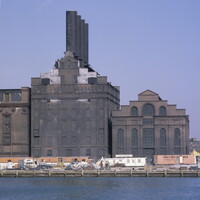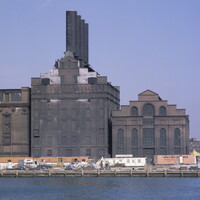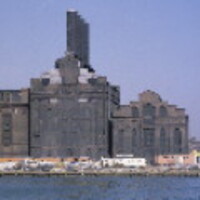| dc.description | Power Plant changes Inner Harbor in 10 years
BY By DORI BERMAN
WC 742 words
PD 10 July 2007
ET 12:37 PM
SN Associated Press Newswires
SC APRS
LA English
CY (c) 2007. The Associated Press. All Rights Reserved.
LP
BALTIMORE (AP) - Not every Baltimorean fell immediately in love with the giant electric guitar that hangs on a smokestack over the Inner Harbor's historic Power Plant building.
But 10 years after the guitar upset some historic preservationists and began beckoning tourists to the Hard Rock Cafe below, the redevelopment of the Power Plant has changed the face of the harbor and how tourists see Baltimore.
TD
"The Power Plant had been abandoned for 10 years, and it was really just a broken-down facility. It was almost an embarrassment if you were at the aquarium to look over this way," said Peter Litecky, general manager of the Hard Rock Cafe, which celebrated its 10th anniversary in the location last week and was the first establishment to open in the Power Plant project.
When the Cordish Co. proposed redeveloping the building, erected in 1900 to power the city's streetcars, it had been sitting vacant after repeated attempts to make it a viable entertainment destination. Six Flags Theme Parks Inc. made a go of it with its P.T. Flaggs indoor amusement park in the 1980s, but the company closed the attraction in 1989. The imposing building with the brick facade and four towering smokestacks sat unused, a bookend to the revitalized Inner Harbor.
Cordish came in and convinced the city to allow clear, recognizable signage to the building that now houses the Hard Rock Cafe, the first in the nation ESPN Zone, a Barnes and Noble bookstore and various other restaurants and businesses.
"For years and years people wouldn't go beyond the aquarium. So you had the Inner Harbor experience being the aquarium down to the Science Center and Rash Field, despite the fact that they had this great building," said Nancy Hinds, vice president of public affairs for the Baltimore Area Convention and Visitors Association.
The Power Plant on Pier Four became a sort of gateway to the area east of the Inner Harbor. Instead of a vacant, imposing building, people look east and see a vibrantly developed project, which carries foot traffic to the hotels, condominium buildings and upscale retail locations that have since popped up beyond.
"Had they never been able to market the building successfully, who knows where we'd be today," Hinds said. "You have people who can no longer come and experience Baltimore in a day. So people are staying in the city longer. You then have retail open up, and retail invites residential development. It adds vitality to the city, and the city doesn't just close up at 5 when everybody leaves work."
Kirby Fowler, president of the Downtown Partnership of Baltimore Inc., said the project became living proof that retail establishments could survive and even prosper in downtown Baltimore. A spin through the city's main tourist attraction now offers a Best Buy, Filene's Basement, Urban Outfitters and a newly revamped Discovery store, and that's not including the stores in the Gallery mall or in Harbor East.
Fowler said the planned redevelopment of the Morris Mechanic Theater, several blocks north of the harbor, is also drawing considerable attention.
"The Power Plant really paved the way for some of the successes we're seeing today. Certainly many projects had failed in the Power Plant before the Cordish Co. took it over. There was a lot of optimism, but I think the success of the Power Plant has exceeded many of our expectations," Fowler said.
The Hard Rock's Litecky, who was also the general manager when the restaurant opened, said he believes people now view the aquarium as the center of the Inner Harbor. People not only are willing to travel beyond the Power Plant but they often stay at hotels in Harbor East and "enter the downtown area from the east end, which never happened before."
And 10 years ago, the Hard Rock Cafe started it all.
"The Hard Rock only goes into 'A' cities. I think it's given Baltimore the recognition it deserves in terms of the national, regional and international tourist market," he said. "You don't find the Hard Rock in Des Moines, Iowa. We go into major metropolitan areas where we can spread the spirit of rock and roll to those who are coming to the city for what it has to offer."
------
Information from: The (Baltimore) Daily Record, http://www.mddailyrecord.com Pier 4, Baltimore Inner Harbor, Baltimore, MD | en_US |


